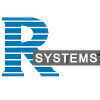
i
OnProcess Technology
Filter interviews by
OnProcess Technology Solution Engineer Interview Questions and Answers for Experienced
OnProcess Technology Solution Engineer Interview Experiences for Experienced
1 interview found
I applied via Company Website
(1 Question)
- Q1. Technical round about briefing about urself and skills
(1 Question)
- Q1. Technical about skills and knowledge
Interview Preparation Tips
Interview questions from similar companies

Senior Software Engineer Interview Questions & Answers
Thomson Reutersposted on 8 Apr 2022
I applied via Naukri.com and was interviewed before Apr 2021. There were 3 interview rounds.
Aptitude test will a hackerrank test where it might have technical MCQ and/or coding test.
(1 Question)
- Q1. Interviewer will test your logic building capability with puzzel/coding and technical questions and experience discussion.
(1 Question)
- Q1. Its a normal discussion with HR about CTC and all.
Interview Preparation Tips

I appeared for an interview before Sep 2020.
(1 Question)
Round duration - 90 minutes
Round difficulty - Medium
It was Technical + Aptitude MCQ round.The technical section consisted if MCQ related to DSA,OS,DBMS.The aptitude section consisted of questions related to basic mathematics.
- Q1.
Candies Distribution Problem Statement
Prateek is a kindergarten teacher with a mission to distribute candies to students based on their performance. Each student must get at least one candy, and if two s...
- Ans.
The task is to distribute candies to students based on their performance while minimizing the total candies distributed.
Create an array to store the minimum candies required for each student.
Iterate through the students' ratings array to determine the minimum candies needed based on the given criteria.
Consider the ratings of adjacent students to decide the number of candies to distribute.
Calculate the total candies req...
(2 Questions)
Round duration - 30 minutes
Round difficulty - Medium
It was a technical interview testing the basic skills of OS and DBMS of candidates along with few project discussions from your CV.
- Q1. Can you write 15 Linux commands along with their functions?
- Ans.
List of 15 Linux commands with their functions
ls - list directory contents
pwd - print working directory
cd - change directory
mkdir - make a new directory
rm - remove files or directories
cp - copy files and directories
mv - move or rename files and directories
grep - search for patterns in files
chmod - change file permissions
ps - display information about running processes
top - display and update sorted information about pr...
- Q2. What are DDL (Data Definition Language) and DML (Data Manipulation Language)?
- Ans.
DDL is used to define the structure of database objects, while DML is used to manipulate data within those objects.
DDL includes commands like CREATE, ALTER, DROP to define database objects like tables, indexes, etc.
DML includes commands like INSERT, UPDATE, DELETE to manipulate data within tables.
Example of DDL: CREATE TABLE employees (id INT, name VARCHAR(50));
Example of DML: INSERT INTO employees VALUES (1, 'John Doe
Interview Preparation Tips
Tip 1 : Be clear about the concepts of Linux and shell scripting.
Tip 2 : Learn about the basics of Data structures and Algorithm.
Tip 3 : Be prepared to explain your projects mentioned in your CV.
Tip 1 : Use professional Keywords in your resume.
Tip 2 : Don't mention anything you are not confident in.
Skills evaluated in this interview

I appeared for an interview before Mar 2021.
(3 Questions)
Round duration - 60 minutes
Round difficulty - Easy
This was a technical round with questions on DBMS.
- Q1. What is data integrity?
- Ans.
Data integrity refers to the accuracy, consistency, and reliability of data throughout its lifecycle.
Data integrity ensures that data is accurate and consistent in storage and transmission.
It involves maintaining the quality and reliability of data over time.
Methods for ensuring data integrity include checksums, encryption, and error detection codes.
Examples of data integrity violations include data corruption, unautho
- Q2. What is a trigger in the context of a database management system?
- Ans.
A trigger is a special type of stored procedure that automatically executes when certain events occur in a database.
Triggers are used to enforce business rules, maintain data integrity, and automate repetitive tasks.
They can be triggered by INSERT, UPDATE, or DELETE operations on a table.
Examples of triggers include auditing changes to a table, updating related tables when a record is modified, or enforcing referential
- Q3. What is the difference between clustered and non-clustered indexes in a database management system?
- Ans.
Clustered indexes physically order the data in the table, while non-clustered indexes do not.
Clustered indexes determine the physical order of data in the table, while non-clustered indexes do not.
A table can have only one clustered index, but multiple non-clustered indexes.
Clustered indexes are faster for retrieval of data, especially range queries, compared to non-clustered indexes.
Non-clustered indexes are stored se...
(3 Questions)
Round duration - 60 minutes
Round difficulty - Easy
Technical interview round with questions on DBMS.
- Q1. What is the difference between UNION and UNION ALL in SQL?
- Ans.
UNION combines and removes duplicates, UNION ALL combines without removing duplicates.
UNION merges the result sets of two or more SELECT statements and removes duplicates.
UNION ALL merges the result sets of two or more SELECT statements without removing duplicates.
UNION is slower than UNION ALL as it involves removing duplicates.
Example: SELECT column1 FROM table1 UNION SELECT column1 FROM table2;
Example: SELECT column...
- Q2. What are the functions of a cursor in PL/SQL?
- Ans.
A cursor in PL/SQL is used to retrieve and process multiple rows of data one at a time.
Allows iteration over a result set
Retrieves data row by row
Can be used to update or delete rows in a table
Must be declared, opened, fetched, and closed
- Q3. Write a SQL query to fetch the nth highest salary from a table.
- Ans.
SQL query to fetch the nth highest salary from a table
Use the ORDER BY clause to sort salaries in descending order
Use the LIMIT clause to fetch the nth highest salary
Round duration - 30 minutes
Round difficulty - Easy
This was a managerial round with typical behavioral problems.
Interview Preparation Tips
Tip 1 : Since this was a SQL post, I would suggest you to get the basics intact and try practicing few queries.
Tip 2 : Must do Previously asked Interview as well as Online Test Questions.
Tip 3 : Go through all the previous interview experiences from Codestudio and Leetcode.
Tip 1 : Have at-least 2 good projects explained in short with all important points covered.
Tip 2 : Every skill must be mentioned.
Tip 3 : Focus on skills, projects and experiences more.
Skills evaluated in this interview

I applied via Naukri.com and was interviewed in May 2019. There was 1 interview round.
Interview Questionnaire
4 Questions
- Q1. How MVC works for data flow?
- Ans.
MVC separates data flow into three components: Model, View, and Controller.
Model represents data and business logic
View displays data to the user
Controller handles user input and updates the model and view accordingly
Data flows from the model to the view through the controller
Changes in the view are communicated to the controller, which updates the model and view
- Q2. What are mvc layers
- Ans.
MVC stands for Model-View-Controller. It is a software design pattern that separates an application into three interconnected components.
Model: Represents the data and business logic of the application
View: Displays the data to the user and handles user input
Controller: Acts as an intermediary between the Model and View, handling user input and updating the Model and View accordingly
- Q3. Get and post methods
- Q4. Servlet life cycle
Interview Preparation Tips
Skills evaluated in this interview

I applied via Naukri.com and was interviewed before Jul 2020. There were 4 interview rounds.
Interview Questionnaire
3 Questions
- Q1. Questions on java8
- Q2. Questions on multithreading
- Q3. Questions on exception handling
Interview Preparation Tips

I applied via Recruitment Consultant and was interviewed before Jun 2020. There were 4 interview rounds.
Interview Questionnaire
1 Question
- Q1. A c++ written round. It contains good questions on c++ related to exception handling, virtual table concepts, smart_ptrs , etc ...
Interview Preparation Tips
Have decent but not great knowledge knowledge in DS/Algos
Know basics of system design.
Be good in your programming language.

I appeared for an interview in Aug 2017.
Interview Questionnaire
3 Questions
- Q1. Tell me something about yourself
- Ans.
I am a passionate software developer with experience in Java, Python, and web development.
Experienced in Java, Python, and web development
Passionate about coding and problem-solving
Strong communication and teamwork skills
Always eager to learn and adapt to new technologies
- Q2. Questions on data structures
- Q3. Questions on algorithms
Interview Preparation Tips
Experience: it took half-an-hour
Skills: Technical Skill, Technical Analysis, Speaking Skills
College Name: NIT Bhopal

I appeared for an interview before Mar 2021.
(6 Questions)
Round duration - 60 minutes
Round difficulty - Medium
The interviewer was really cool. He realized that I mostly work on java applications so he chose to ask me stuff related to that. He didn't want me to know the answer well but just wanted me to approach to it, maybe think more. He went through my resume back and forth and asked mostly about all my projects and their logic and how could I take them to the next level.
Tips: Be confident. Its okay not to know any answer, just try giving it a shot in the approach.
- Q1. What is the difference between an abstract class and an interface in Java?
- Ans.
Abstract class can have both abstract and non-abstract methods, while interface can only have abstract methods.
Abstract class can have constructors, member variables, and methods with implementation.
Interface can only have abstract methods and constants.
A class can implement multiple interfaces but can only extend one abstract class.
Example: Abstract class - Animal with abstract method 'eat', Interface - Flyable with m
- Q2. What is the difference between 'final', 'finally', and 'finalize' in Java?
- Ans.
final is a keyword used to declare constants, finally is a block used in exception handling, and finalize is a method used for cleanup.
final is a keyword used to declare constants in Java, meaning the value cannot be changed once assigned. Example: final int x = 10;
finally is a block used in exception handling to ensure a piece of code is always executed, whether an exception is thrown or not. Example: try { // code } ...
- Q3. What is the difference between the private and final access modifiers in Java?
- Ans.
Private restricts access to the class itself, while final prevents inheritance and method overriding.
Private access modifier restricts access to the class itself, while final access modifier prevents inheritance and method overriding.
Private members are only accessible within the same class, while final classes cannot be extended and final methods cannot be overridden.
Example: private int num; - num can only be accesse...
- Q4. What are the steps for establishing a JDBC connection?
- Ans.
Establishing a JDBC connection involves loading the driver, creating a connection, creating a statement, executing queries, and handling exceptions.
Load the JDBC driver using Class.forName() method
Create a connection using DriverManager.getConnection() method
Create a statement using connection.createStatement() method
Execute queries using statement.executeQuery() method
Handle exceptions using try-catch blocks
- Q5. What is JSON?
- Ans.
JSON is a lightweight data interchange format used to store and transmit data between a server and a web application.
JSON stands for JavaScript Object Notation.
It is easy for humans to read and write, and easy for machines to parse and generate.
JSON is language-independent and can be used with any programming language.
Example: {"name": "John", "age": 30}
Example: [{"name": "Alice", "age": 25}, {"name": "Bob", "age": 35}
- Q6. What do you know about garbage collection in Java?
- Ans.
Garbage collection in Java is the process of automatically managing memory by deallocating objects that are no longer needed.
Garbage collection helps in preventing memory leaks by reclaiming memory used by objects that are no longer referenced.
Java uses a garbage collector to automatically manage memory, unlike languages like C++ where memory management is manual.
Garbage collection in Java can be triggered by calling S...
Round duration - 30 minutes
Round difficulty - Easy
I wouldn't say it went great but it was fine. I did not think I would clear it as for most of the questions the interviewer seemed disappointed and wanted more out of me.
Interview Preparation Tips
Tip 1 : Must do Previously asked Interview as well as Online Test Questions.
Tip 2 : Go through all the previous interview experiences from Codestudio and Leetcode.
Tip 3 : Do at-least 2 good projects and you must know every bit of them.
Tip 1 : Have at-least 2 good projects explained in short with all important points covered.
Tip 2 : Every skill must be mentioned.
Tip 3 : Focus on skills, projects and experiences more.
Skills evaluated in this interview

Interview Questionnaire
21 Questions
- Q1. AVL tree balance checking
- Q2. Median of 2 sorted arrays in O(log N) time complexity and O(1) space complexity
- Ans.
Find median of 2 sorted arrays in O(log N) time complexity and O(1) space complexity
Use binary search to find the partition point in both arrays
Calculate the median based on the partition point and array sizes
Adjust the partition points based on the median value
Repeat until the partition points are at the median
Handle edge cases such as empty arrays and uneven array sizes
- Q3. Strings Anagram in O(1) space complexity
- Ans.
Anagram of strings in O(1) space complexity
Use a fixed size array of integers to store the frequency of characters in the first string
Iterate through the second string and decrement the frequency of each character in the array
If all the frequencies are zero, then the strings are anagrams
Return true or false accordingly
- Q4. Level order traversal of a tree using Queue
- Ans.
Level order traversal of a tree using Queue
Create a queue and add the root node to it
While the queue is not empty, remove the front node and print its value
Add the left and right child nodes of the removed node to the queue
Repeat until the queue is empty
- Q5. Reverse level order traversal of a tree using Queue
- Ans.
Reverse level order traversal of a tree using Queue
Create a queue and push the root node into it
While the queue is not empty, pop the front node and push its children into the queue
Add the popped node to a stack
Once the queue is empty, pop elements from the stack and print them
- Q6. BFS and DFS Difference
- Ans.
BFS and DFS are graph traversal algorithms. BFS explores nodes level by level while DFS explores nodes depth by depth.
BFS uses a queue while DFS uses a stack or recursion.
BFS is optimal for finding shortest path while DFS is optimal for finding a path between two nodes.
BFS requires more memory as it stores all the nodes at each level while DFS requires less memory.
BFS can be used to find connected components while DFS
- Q7. OS Concepts – Starvation, Demand Paging, Virtual Memory, Deadlocks
- Q8. Parenthesis Balance Checking
- Q9. Three Jars - 1 with apples, 1 with oranges, 1 with apples and oranges. All of them wrongly labelled. Find min no of attempts to find the correct nature of boxes
- Q10. Find product of each element of an array except that element in O(N) time complexity without using / operation
- Ans.
Find product of each element of an array except that element in O(N) time complexity without using / operation
Use prefix and suffix products
Multiply prefix and suffix products for each element to get the final product
Handle edge cases where array has 0 or 1 element separately
- Q11. Recursively deleting linked list
- Ans.
Recursively delete a linked list
Create a recursive function that takes the head of the linked list as input
Base case: if the head is null, return
Recursively call the function with the next node as input
Delete the current node
- Q12. Recursively deleting linked list from end
- Ans.
Recursively delete a linked list from the end.
Start from the head and recursively traverse to the end of the list.
Delete the last node and set the second last node's next pointer to null.
Repeat until the entire list is deleted.
Use a recursive function to implement the deletion process.
- Q13. Recursively deleting tree
- Ans.
Recursively delete a tree by deleting all its child nodes and then the parent node.
Start from the leaf nodes and delete them first.
Then move up to the parent nodes and delete them.
Repeat until the root node is deleted.
Use post-order traversal to ensure child nodes are deleted before parent nodes.
- Q14. Recursively deleting from end
- Ans.
Recursively delete elements from the end of an array.
Create a recursive function that removes the last element of the array.
Call the function recursively until the desired number of elements are removed.
Handle edge cases such as empty arrays and removing more elements than the array contains.
- Q15. Difference between Floyd Warshall and Djikstra
- Ans.
Floyd Warshall finds shortest path between all pairs of vertices while Djikstra finds shortest path from a single source.
Floyd Warshall is used for dense graphs while Djikstra is used for sparse graphs.
Floyd Warshall has a time complexity of O(n^3) while Djikstra has a time complexity of O((n+m)logn).
Floyd Warshall can handle negative edge weights while Djikstra cannot.
Floyd Warshall can detect negative cycles while Dj
- Q16. Shortest path between 2 points in 2-D space in O(log N) time
- Ans.
There is no known algorithm to find shortest path in 2-D space in O(log N) time.
The best known algorithm for finding shortest path in 2-D space is Dijkstra's algorithm which has a time complexity of O(N^2).
Other algorithms like A* and Bellman-Ford have better time complexity but still not O(log N).
If the points are on a grid, Lee algorithm can be used which has a time complexity of O(N).
- Q17. Design a system for putting newspapers using classes and functions taking different aspects into account
- Ans.
Design a system for putting newspapers using classes and functions
Create a Newspaper class with attributes like title, date, and content
Create a Publisher class with methods to publish and distribute newspapers
Create a Subscriber class with methods to subscribe and receive newspapers
Use inheritance to create different types of newspapers like daily, weekly, etc.
Implement a database to store newspaper information and ha
- Q18. SQL commands
- Q19. Career Prospects - Long Term Plans
- Q20. Why not higher studies?
- Ans.
I believe practical experience is more valuable than higher studies.
I have gained valuable experience through internships and projects.
I prefer hands-on learning and problem-solving over theoretical knowledge.
I am constantly learning and improving my skills through online courses and workshops.
- Q21. Machine Learning Concepts - Based on my projects
Interview Preparation Tips
Experience: All Computer Science Topics Covered: Data Structures, Algorithms, Object Oriented Systems, C, C++, Operating Systems, Computer Architectures, Databases, SQL, Basic Quantitative Aptitude
Tips: Solve all of them. Cut off's generally go high.
Duration: 30 minutes
Total Questions: 30
Round: Interview
Experience: Nice Experience. Interviewer was friendly. He wanted exact solutions.
Tips: Be thorough with everything and your projects.
Round: Interview
Experience: Nice Experience. Interviewer was friendly. He wanted exact solutions.
Tips: Be thorough with everything and your projects.
Round: Interview
Experience: Nice Experience. Interviewer was friendly.
Tips: Do not fake yourself.
General Tips: Be thorough with all CS related concepts and projects.
Skill Tips: ""Be thorough.""
Skills: Algorithms, Data Structures, Operating Systems, Machine Learning, SQL, Operating Systems, Computer Architecture, Data Analytics
College Name: IIT Kharagpur
Motivation: Kind of application oriented work and the rising nature of the company. Obviously money also.
Funny Moments: Many funny questions and answers like did you have lunch, when did you last eat, etc
Skills evaluated in this interview
OnProcess Technology Interview FAQs
Tell us how to improve this page.
OnProcess Technology Interviews By Designations
- OnProcess Technology Customer Service Associate Interview Questions
- OnProcess Technology Assistant O2C Manager Interview Questions
- OnProcess Technology Technical Operations Engineer Interview Questions
- OnProcess Technology Customer Support Executive Interview Questions
- OnProcess Technology Operations Associate Interview Questions
- OnProcess Technology Solution Engineer Interview Questions
- OnProcess Technology Manager Interview Questions
- OnProcess Technology Application Support Consultant Interview Questions
- Show more
Interview Questions for Popular Designations
- Solution Architect Interview Questions
- Senior Solution Architect Interview Questions
- Solution Consultant Interview Questions
- Solution Specialist Interview Questions
- Solution Developer Interview Questions
- Associate Solution Lead Interview Questions
- AWS Solution Architect Interview Questions
- Solution Integrator Interview Questions
- Show more
Interview Questions from Similar Companies
OnProcess Technology Solution Engineer Reviews and Ratings
based on 1 review
Rating in categories
|
Customer Service Associate
38
salaries
| ₹1.8 L/yr - ₹3.5 L/yr |
|
Customer Service Executive
29
salaries
| ₹1.5 L/yr - ₹3 L/yr |
|
Customer Care Executive
24
salaries
| ₹1.5 L/yr - ₹3.2 L/yr |
|
Senior Associate
23
salaries
| ₹1.5 L/yr - ₹3.2 L/yr |
|
Senior Customer Service Executive
21
salaries
| ₹1.7 L/yr - ₹3 L/yr |

Thomson Reuters

Oracle Cerner

Chetu

R Systems International
- Home >
- Interviews >
- OnProcess Technology Interview Questions >
- OnProcess Technology Solution Engineer Interview Questions for Experienced














